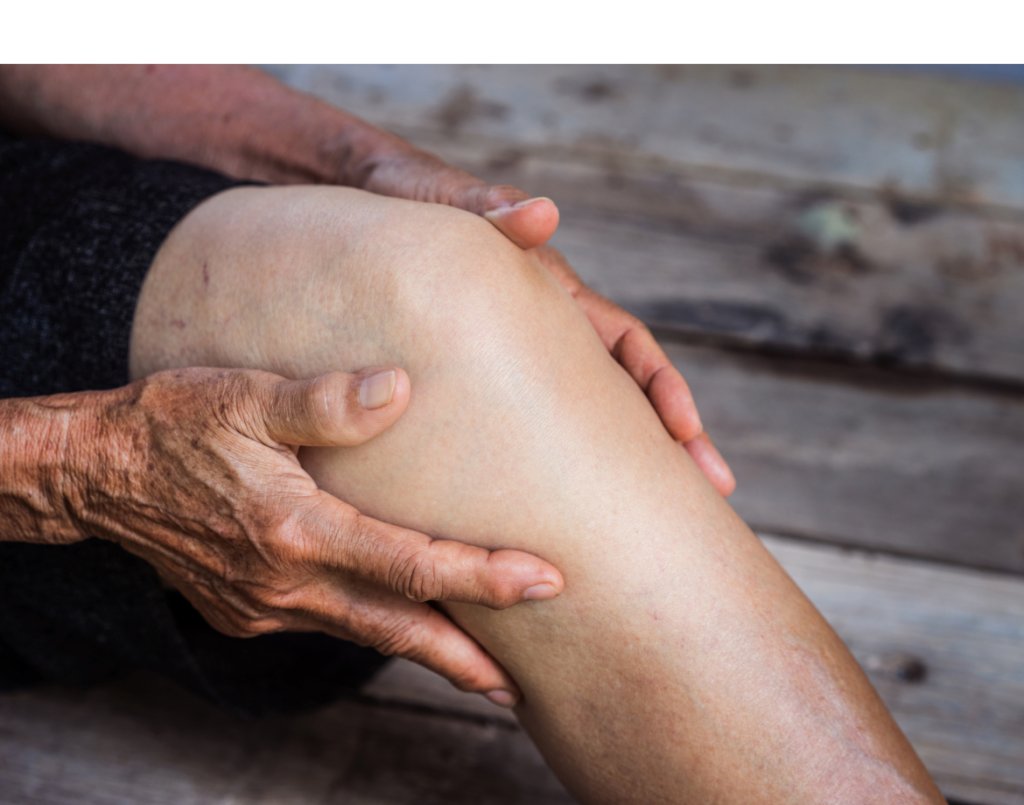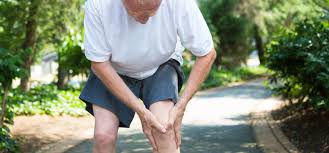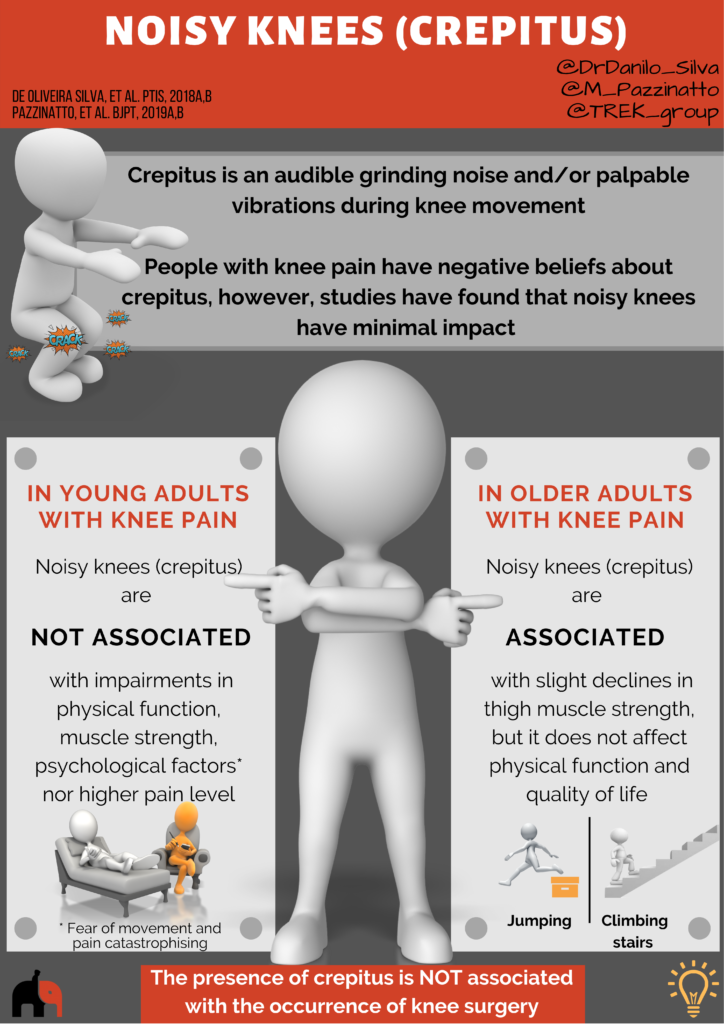Symptoms of knee osteoarthritis can vary significantly from person to person. This section provides you with more information about the cause and meaning of symptoms.
Frequently Asked Questions (FAQs)
The most common symptoms of knee osteoarthritis are:
- Pain
- Stiffness
In fact these two symptoms, in combination with your age, are used to diagnose knee osteoarthritis clinically using the NICE criteria (to find out more visit our understanding the condition page).
Other common symptoms can include:
- Crepitus (the noises that knees make such as grinding, clicking and clunking)
- Changes in the way your bones/joints look
The symptoms of knee osteoarthritis can significantly affect an individuals function and quality of life. The good thing is that it is possible to change and improve your pain, stiffness, function and quality of life.
The presence of pain can be worrying for people with knee osteoarthritis. We used to think that the pain was linked to ‘damage’ of tissues (for example the cartilage). But we now know that this isn’t true.
We now appreciate that pain is a very complex and unique experience that often has very little to do with any structural changes to the knee joint or the surrounding tissues. This is often very reassuring for people with knee osteoarthritis as this often acts as a barrier for some people engaging with physical activity or exercise.
It’s important to note that things like stress, body weight, lack of sleep and environmental factors all play their part in someone’s pain experience. This is great news as it means there are many things that someone with knee osteoarthritis can try to influence to reduce the pain they are experiencing.
See the below image for more information.
Usually stiffness occurs when someone stays in a position for a sustained period of time. For example often people will get stiffness when they first get up in the morning or after they have sat down watching TV for a hour of so.
This should not cause concern and should ease when you start to move your leg/knee.
If you are performing activities like watching TV, try to straighten and bend your knee regularly, or split your time doing sedentary activities with more physically active tasks.
Many people with and without knee conditions complain of noisy knees. Noises can vary from grinding to clicking and cracking. The noises knees make are commonly referred to as ‘crepitus’ by healthcare professionals.
We know from research that these noises are sometimes concerning for people with knee osteoarthritis and they are fearful that they are causing damage.
But generally, these sounds are completely normal and should not cause concern. For example noisy knees are NOT associated with:
- The severity of the condition
- Someone’s physical function
- Someone’s quality of life
See the infographic that summarises crepitus in knee osteoarthritis.
 People often think that osteoarthritis is just a case of ‘degeneration’ of the cartilage. But actually – osteoarthritis affects many structures at the knee joint (including bone, muscles, ligaments etc.). In osteoarthritic joints, there is a constant cycle of degeneration and regeneration. Sometimes this may cause bony enlargements to occur.
People often think that osteoarthritis is just a case of ‘degeneration’ of the cartilage. But actually – osteoarthritis affects many structures at the knee joint (including bone, muscles, ligaments etc.). In osteoarthritic joints, there is a constant cycle of degeneration and regeneration. Sometimes this may cause bony enlargements to occur.
It’s important to note that the extent of bony enlargement is not necessarily an indication of how severe your knee osteoarthritis is.
What have those living with knee osteoarthritis got to say?
Resources and additional information
Click on any any topic to view the resource
Infographic: Factors associated with your knee pain
- National Clinical Guideline C. National Institute for Health and Clinical Excellence: Guidance. In: Osteoarthritis: Care and Management in Adults. London: National Institute for Health and Care Excellence (UK).
- French SD, Bennell KL, Nicolson PJ, Hodges PW, Dobson FL, Hinman RS. What do people with knee or hip osteoarthritis need to know? An international consensus list of essential statements for osteoarthritis. Arthritis care & research. 2015;67(6):809-816.
- Practitioners TRACoG. Guideline for the management of knee and hip osteoarthritis.
Next – Test your knowledge about knee osteoarthritis


